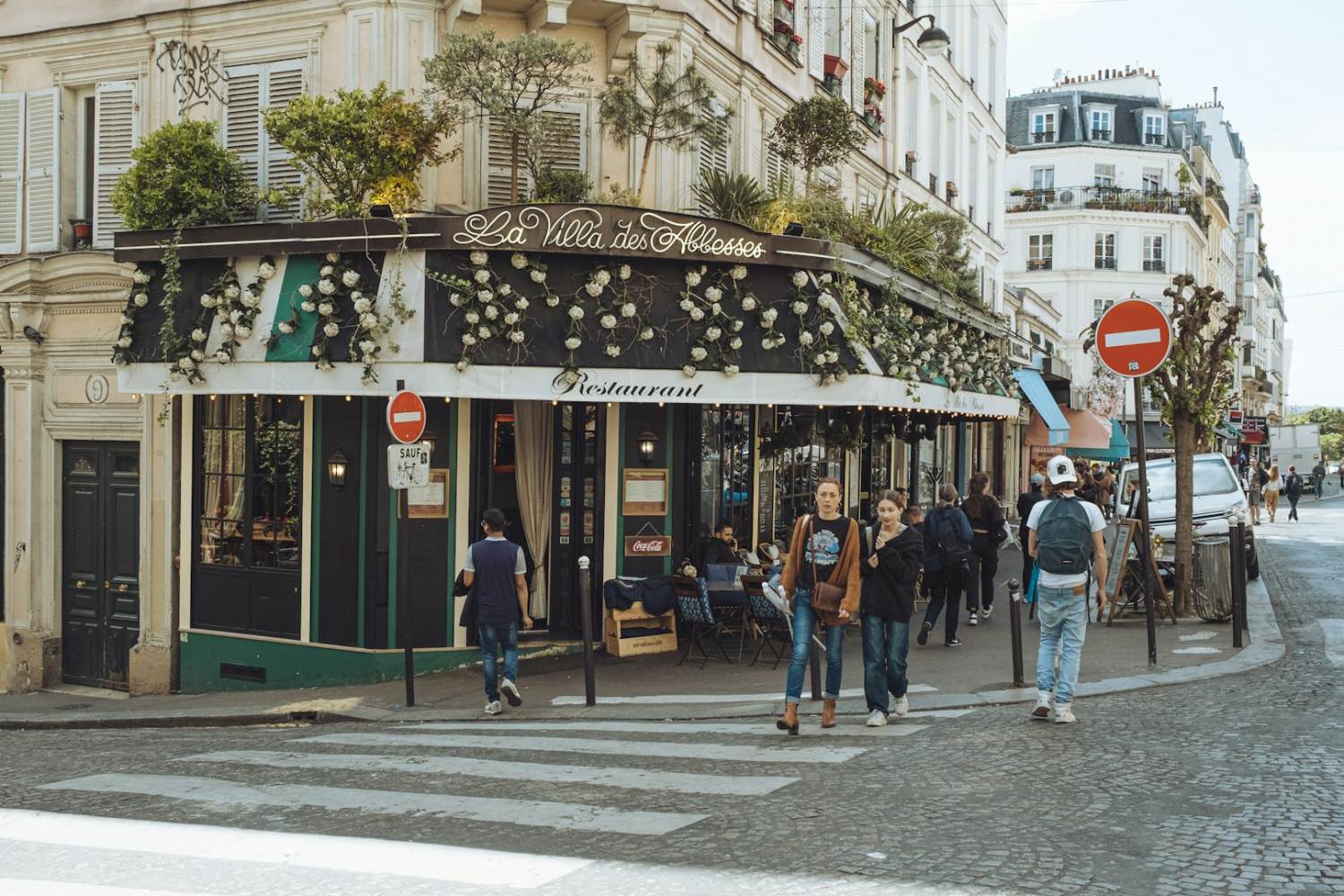The dream of a new life in Portugal often comes with a vision of a sun-drenched home that is both beautiful and in harmony with its environment. For many who are planning to make the move, the idea of a house that is not only sustainable but also promotes the health and well-being of its occupants is a top priority. While Portugal’s real estate market presents a unique blend of opportunities and challenges, a holistic approach that places human health at its core can transform a simple building project into a future-proof investment.
This comprehensive guide is designed for expats and future residents, providing a detailed overview of the most important trends, the certifications that validate a project’s quality, and the crucial financial incentives that are making sustainable projects in Portugal not just an environmental choice, but an economically sound one. In this dynamic environment, a focus on health and well-being is a key differentiator. For example, Mezzalyn is uniquely positioned to address this growing market demand by prioritizing health and going beyond mere efficiency goals.
1. The Portuguese Real Estate Landscape: An Overview for Expats
The decision to move to Portugal and acquire a home is often motivated by the country’s mild climate and a desire for a healthy lifestyle. However, a closer look at the housing market reveals a complex reality. The national statistics office (INE) has reported a curious paradox: over the past decade, the population has decreased, yet the number of available homes has increased.1 This doesn’t mean there is a surplus of housing. In fact, a severe housing crisis exists, particularly in sought-after coastal regions and urban hubs like Lisbon.1
This paradox is explained by a few critical factors. A significant portion of properties—an estimated 30.6% of houses—are vacant and not on the market.1 These include homes tied up in lengthy inheritance disputes or those used as private holiday residences.1 This artificial scarcity, coupled with the above-average purchasing power of foreign investors in regions like the Algarve and Lisbon, drives up property prices and exacerbates the housing crisis for local residents.1 For foreign buyers, the journey begins with essential administrative steps. The most crucial first step is to obtain a Portuguese tax number, the
Número de Identificação Fiscal (NIF), which is required for almost all financial and legal transactions, from opening a bank account to signing contracts.2
Given the lack of a legal disclosure obligation in Portugal’s real estate market, selecting a local, independent lawyer is the most important decision a potential buyer can make.4 Unlike some other countries, sellers are not legally required to disclose information about the property’s condition, outstanding mortgages, or legal issues.4 A lawyer is therefore essential to conduct thorough legal due diligence, verify ownership titles, and ensure that the property is free of debts or mortgages.3 Having legal counsel who is proficient in the buyer’s native language can significantly simplify communication and prevent problems from the outset.4 This legal guidance is also critical when dealing with construction contracts, which can often be drafted in a way that heavily favors the construction company, leaving the homeowner with few rights.6
2. The Two Paths: Buying & Renovating vs. Building New
A. Buying and Renovating an Existing Property
The process of buying an existing home in Portugal is a multi-stage process that begins after an offer is accepted. The next step is typically the signing of a promissory contract (Contrato Promessa de Compra e Venda, or CPCV).2 While not legally mandatory, this contract is a standard practice and is legally binding. Upon signing the CPCV, the buyer usually pays a deposit of about 10% of the purchase price, which is forfeited if the buyer withdraws without justification.2 The final transfer of ownership occurs at the public deed (
Escritura Pública), where the remaining balance is paid, and the buyer is officially registered as the new owner.3
Before signing any contracts, a thorough review of the property’s documentation is indispensable. This includes the Land Registry Certificate (Certidão de Teor), the Property Tax Record (Caderneta Predial Urbana), and the Energy Performance Certificate (Certificado Energético).3 While a new law since January 2024 has made the presentation of the occupancy license (
Licença de Utilização) no longer mandatory for the CPCV, it is still strongly recommended that buyers request it.2 A lawyer’s role is crucial here to ensure the conformity of the registered property with the actual building and plot size.7
Renovating older buildings in Portugal is a significant challenge but also a major opportunity. Current data shows that two out of every three buildings in the country have an energy class of C or lower, with only 2.8% achieving the highest rating of A+.8 This need for renovation is politically reinforced by a new EU directive (
(EU) 2024/1275) that sets minimum energy performance standards for buildings.9 The directive obliges member states to progressively reduce the average primary energy consumption of their residential building stock by 16% by 2030 and by 20-22% by 2035.10 To address this, the Portuguese government has launched various funding programs, managed through the
Fundo Ambiental, to provide financial support for renovation projects. Owners and tenants of homes can benefit from programs like the Programa de Apoio a Edifícios Mais Sustentáveis (PAE+S), which funds measures such as replacing windows with efficient A+ rated models, installing thermal insulation on roofs, walls, and floors, and installing modern heating, cooling, or hot water systems.11 These programs, partly financed by Portugal’s Recovery and Resilience Plan (PRR), have proven to be extremely popular, leading to a quick depletion of budgets in the past.13
B. The Journey of a New Build
Starting a new construction project in Portugal requires a careful selection of a plot of land. A crucial legal prerequisite is that the land is located in a designated building zone, as specified in the municipal master plan (Plano Director Municipal).14 Beyond legalities, bioclimatic factors such as solar orientation, prevailing winds, and views should be carefully considered during land selection.16
The bureaucratic process for construction in Portugal can be complex. There are two main types of building permit procedures: the licensing procedure (licença) and the prior notification procedure (comunicação prévia).5 The prior notification procedure is the more common route, allowing construction to begin immediately after submitting the required documents and paying fees, provided the municipality raises no objections.17 The classic licensing procedure is only required for specific, legally defined projects such as infrastructure or the renovation of protected buildings.5 For builders who are uncertain about the feasibility of their project, it is advisable to obtain a preliminary opinion (
informação prévia), a legally binding statement from the authorities that minimizes risk before purchasing the land.14
Personal accounts from expats who have built homes in Portugal paint a mixed picture, often warning of significant challenges.19 Reports on online forums and blogs describe projects that took five years or more, instead of the estimated one or two.19 The most common issues are massive budget overruns and extreme delays, often caused by a lack of work ethic or contractor unreliability.19 A central problem is the expat’s absence from the site, which makes monitoring difficult and increases the risk of defects and unforeseen issues.21 Building trust in an absolutely reliable foreman or project manager who can supervise the work on-site is highlighted as the most significant factor for success.20
3. The Core Principles of Healthy and Sustainable Living
A. Concepts and Philosophy
The term “healthy construction” in Portugal encompasses a holistic philosophy that goes beyond pure environmental concerns to prioritize the well-being of the occupants. It’s about designing buildings in a way that does not harm the health of people, animals, and the environment before, during, and after the construction phase.22 Experts in this field focus on the toxicity and radioactivity of building materials, indoor air quality, and the influence of artificial electromagnetic fields. A critical element of this approach is
geobiology, a science that studies the relationship between living organisms and their location. In practice, this means that during site selection and design, influences such as underground water streams, geological faults, or the presence of radon gas are considered, as these can act as channels for terrestrial radiation and affect human health.23
Closely related to this is bioclimatic architecture, which adapts a building’s design to local climate conditions.16 This approach maximizes thermal and visual comfort through passive measures that minimize energy consumption. These include optimal house orientation, natural ventilation, strategic window placement, and the use of roofs that absorb solar energy in winter and protect from overheating in summer. Another innovative approach is
biophilic architecture, which integrates natural elements, materials, and forms into the design to strengthen the psychological connection between humans and nature. This has been shown to reduce stress and increase overall well-being.
B. Materials and Modern Techniques
In the field of sustainable construction in Portugal, traditional local materials are being rediscovered and combined with modern techniques. Companies like Natura Materia and Pinho&Palha focus on sustainable and healthy building materials such as hemp concrete (Betão de Cânhamo), cork, clay, and wood.24 Hemp concrete is particularly advantageous because it is breathable, which helps to transport excess moisture out of the house, preventing mold formation and ensuring a healthy indoor climate. Another positive aspect is the low carbon footprint of these materials.26 Local and natural raw materials also help to minimize energy consumption during the construction phase and reduce dependence on imported materials.
At the same time, innovative approaches are transforming the construction industry. In Portugal, work is underway on developing 3D printing solutions for home construction, which are intended to enable faster, more sustainable, and more cost-effective building.27 The “Casa do Futuro” project, promoted by the company HAVLAR and co-financed by the EU program
COMPETE 2030, is an example of this forward-thinking approach. While the materials and technologies for healthy and sustainable construction are available in Portugal, the lack of specific standards for their application presents a significant hurdle. This means that builders and architects must rely on knowledgeable partners to meet legal and technical requirements.28
4. The World of Certifications: A Guide to Excellence
Certifications are the currency of trust in the sustainable construction industry. They provide a transparent, measurable basis to evaluate the performance of buildings and give confidence to investors, developers, and end-users.29 In Portugal, several systems dominate the field, both international and local.
International Giants: LEED & BREEAM
The certification systems LEED (Leadership in Energy and Environmental Design) from the USA and BREEAM (Building Research Establishment Environmental Assessment Method) from the UK are globally recognized leaders.29 Edifícios Saudáveis, a pioneer in the Portuguese market, was responsible for the first LEED and BREEAM certifications in the country, and even achieved the first
LEED PLATINUM certification for a supermarket in Europe.33 These certifications evaluate buildings across a wide spectrum, from energy and water efficiency to material selection and indoor air quality.29 They are an essential tool for demonstrating the sustainability of properties and differentiating them in a competitive market.29
The German Standard: DGNB
In addition to LEED and BREEAM, the German DGNB system is also recognized as a relevant international standard.30 It is distinguished by its holistic evaluation, which considers not only environmental and economic performance but also sociocultural aspects like a building’s functionality.36
The Local Champion: LiderA
A deep understanding of the local market is incomplete without the LiderA System.37 LiderA is a voluntary Portuguese system specifically developed for the local context and recognized by the Instituto da Habitação e da Reabilitação Urbana (IHRU).39 The system evaluates building performance based on six principles, ranging from local integration to socioeconomic experiences.40 The system is not just an evaluation; it is a guide that includes six principles for good environmental performance: local integration, resource management, emissions management, quality of service and resilience, socioeconomic experiences, and sustainable use.41 This broad coverage makes LiderA a comprehensive tool for projects seeking a local connection. The LiderA system is of great importance for local developers, especially for projects aiming for government funding under “Habitação de Custos Controlados” (controlled housing costs).39
Table 1: Comparison of Sustainability Certifications
| Certification | Origin | Main Focus | Application Areas |
| LEED | USA | Energy and water efficiency, material selection, indoor air quality | New builds, renovations, commercial, and residential buildings of all types |
| BREEAM | UK | Holistic life cycle, well-being, resource efficiency, biodiversity | New builds, renovations, both commercial and private |
| Passivhaus | Germany | Maximum energy efficiency, minimization of energy consumption for heating/cooling | New builds and renovations, especially for highly energy-efficient buildings |
| LiderA | Portugal | Holistic sustainability assessment with a strong environmental focus | New builds, renovations, private homes, tourism, commercial, urban areas |
5. Financial Aspects and Government Support
The decision to invest in sustainable and healthy building in Portugal is increasingly driven by strong financial incentives. The government, in collaboration with the European Union, has created a comprehensive network of funding programs to accelerate the transformation of the construction sector. For developers, architects, and investors, these programs are not an optional bonus but a crucial tool for making projects economically viable and maximizing their return on investment (ROI).
The Foundation: National and EU Strategies
The financial framework for sustainable building in Portugal is deeply rooted in national and European climate and economic strategies. The country has committed to achieving carbon neutrality by 2050.42 This ambitious goal is concretized by two main programs at the European and national levels: the
Plano de Recuperação e Resiliência (PRR) and Portugal 2030.
The PRR, a central pillar of the EU-wide recovery program, provides Portugal with grants of around 14 billion euros, to be implemented by 2026.43 The program is organized into three strategic dimensions, of which the “Transição Climática” (Climate Transition) plays a key role.44 The
PRR aims to promote sustainable growth and strengthen the economy’s resilience by investing in areas such as energy efficiency, decarbonization, and infrastructure.44
Portugal 2030 is a long-term partnership agreement with the European Commission that mobilizes a total of 23 billion euros in European funds for the period from 2021 to 2027.46 A central component is the “Programa de Sustentabilidade,” which is endowed with 3.1 billion euros to address the challenges of the climate and energy transition. Specifically for companies, the measure
“Descarbonização das Empresas” (Decarbonization of Companies) was launched, with a budget of 205 million euros.48 It supports projects that reduce energy consumption and greenhouse gas emissions and enhance the competitiveness of companies.48
Key Funding Instruments in Detail
For construction projects in Portugal, there are several concrete funding instruments aimed at different target groups and project phases.
Fundo Ambiental
The Fundo Ambiental is a central mechanism for implementing policies in the areas of climate change, water resources, and waste management.50 The “Programa de Apoio a Edifícios Mais Sustentáveis” (Program to Support More Sustainable Buildings) under this fund has a total allocation of 100 million euros and is aimed at owners and tenants of private residences.11 The program covers up to 85% of eligible costs, with a maximum of 7,500 euros per person or household.50 This demonstrates how serious the government is about supporting the population in implementing these measures. Further proof of the program’s importance is the massive budget increase. In January 2025, the initial allocation of 30 million euros was topped up with an additional 60 million euros, underscoring the high demand and success of the initiative.52
Eligible measures include:
- Building Envelope Improvements: The replacement of inefficient windows with energy-efficient “A+” class windows and the application or replacement of thermal insulation on roofs, walls, and floors.11
- Systems for Heating, Cooling, and Hot Water: The installation of efficient systems that contribute to energy savings.11
- Renewable Energy: The installation of photovoltaic panels.11
PRR and Portugal 2030 Incentives for Companies
While some programs target individuals, the PRR and Portugal 2030 funds are specifically designed for companies and larger projects.47 The application procedures are designed to accelerate project implementation. Companies can submit a “Registo de Pedido de Auxílio” (RPA), or Request for Aid Registration, to secure the eligibility of their investments even before the official opening of a call for proposals.48 This is particularly advantageous for projects that require a long planning and lead time, such as the procurement of special equipment or the hiring of specialized service providers.48 The funding can cover a variety of costs, including construction and renovation, specialized services, and even the costs for certifications like LiderA.39
Table 2: State Funding Programs for Sustainable Construction
| Program Name | Target Group | Funded Measures | Funding Source |
| PAE+S | Owners, co-owners, and tenants of homes | Window replacement (min. Class A+), thermal insulation, solar panels, efficient heating & cooling systems | Fundo Ambiental, PRR |
| Vale Eficiência | Economically vulnerable households | Vouchers (€1,300 + VAT) for installing efficient windows, solar panels, etc. | Fundo Ambiental, PRR |
| E-Lar | Socio-economically vulnerable families | Subsidies for the purchase of electric appliances (stove, oven, etc.) | Fundo Ambiental |
| Portugal 2030 | Companies, municipalities, public and private institutions | Comprehensive projects for decarbonization, energy efficiency, and competitiveness | European Funds (ERDF, ESF+, Cohesion Fund, etc.) |
Alternative and Private Financing
In addition to the large government programs, private and alternative financing mechanisms also complement the landscape to support sustainable construction in Portugal. The European Investment Bank (EIB) has partnered with União de Créditos Imobiliários (UCI) to finance “green and sustainable housing projects”.56 Furthermore, alternative forms of financing like
crowdfunding and participation models (associação em participação) are gaining importance.57
6. Conclusion: A Path to Your Portuguese Dream Home
The path to a sustainable and healthy home in Portugal is a complex but achievable endeavor. The analysis reveals a dual reality: on one hand, there are bureaucratic hurdles that can cause delays, and a traditional construction sector that is often viewed with skepticism.19 On the other hand, there is a strong political will at the national and European levels, backed by significant financial incentives, to drive sustainable construction forward. Furthermore, a growing network of specialized architects, construction companies, and consultants who focus on environmentally friendly and health-oriented building practices is readily available.
To successfully navigate this process, a proactive and well-prepared approach is essential. The ability to find a trustworthy, on-site project manager, to choose partners who prioritize health and well-being, and to leverage the complex network of government funding will be the key to turning the dream of a sustainable Portuguese home into a tangible, long-term reality. The financing landscape in Portugal is a crucial catalyst for the sustainable building transition. The abundance of state and private incentives transforms sustainable construction from an idealistic concept into an economically rational decision. For developers, architects, and investors, it is no longer just about protecting the environment but also about increasing the value of their properties, minimizing regulatory risk, and benefiting from generous subsidies.29 The ability to navigate this complex web of regulations and programs is invaluable.








